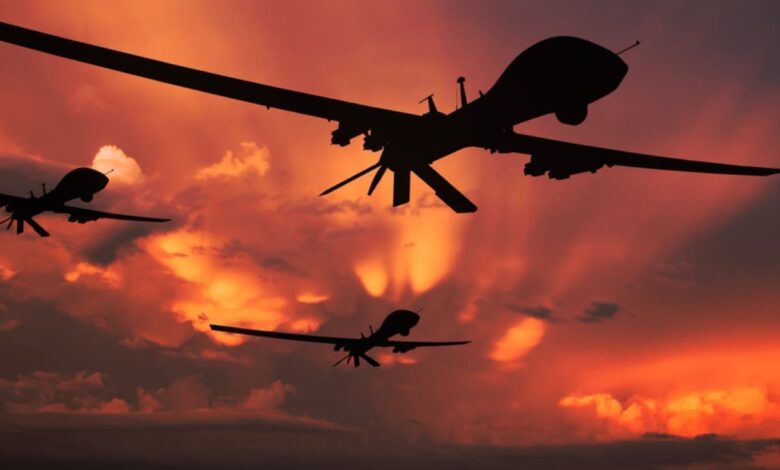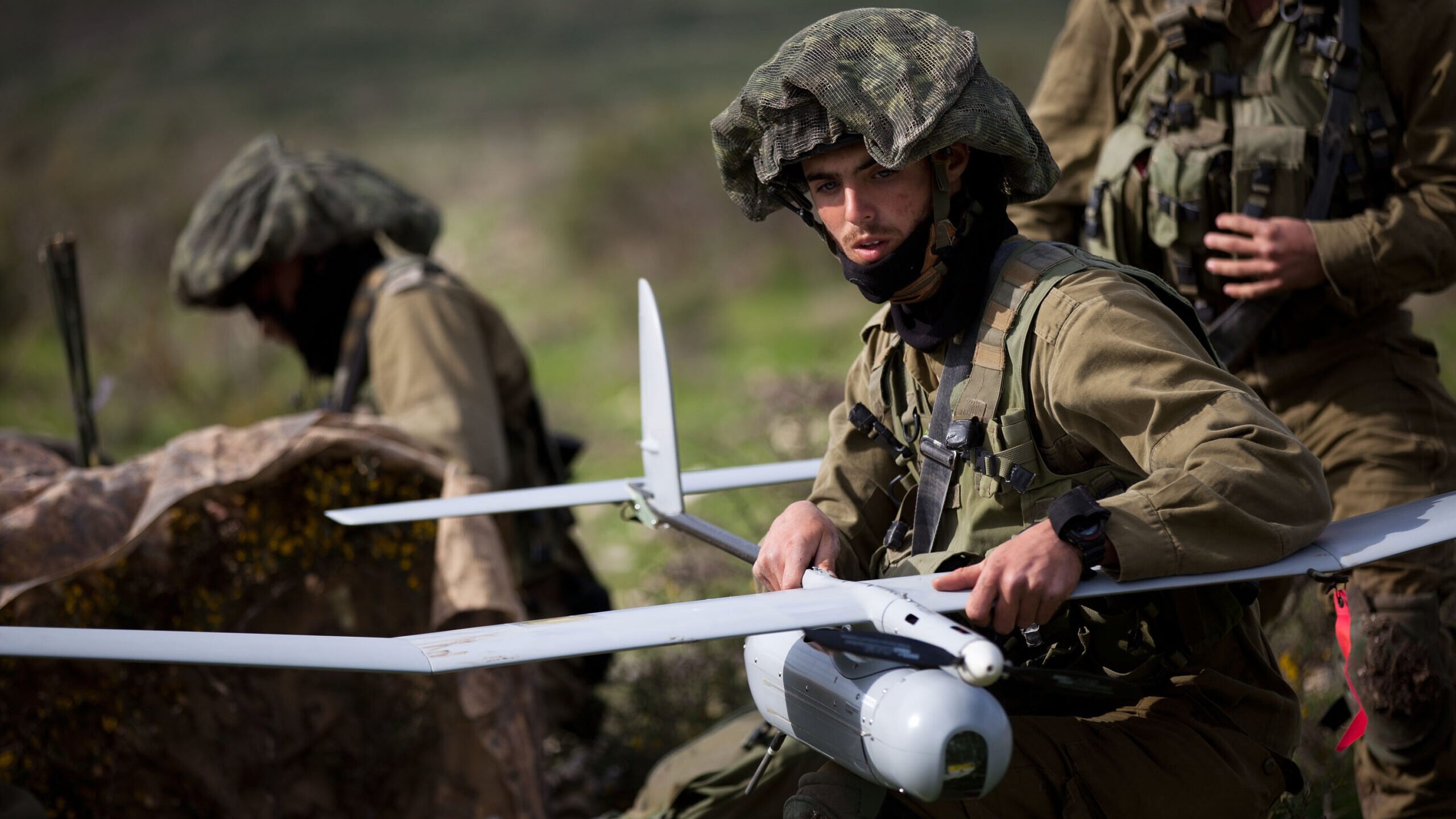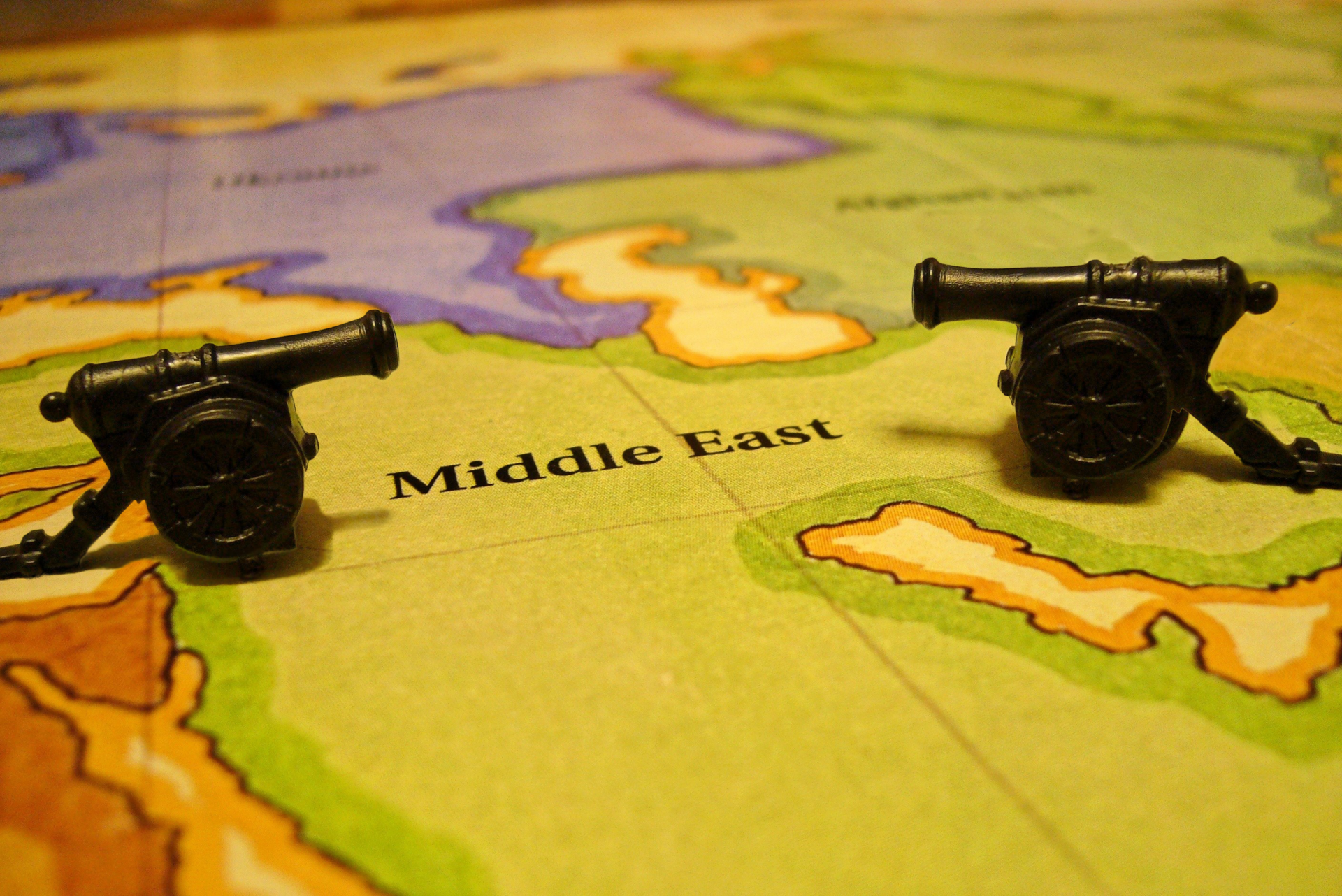Fighting At Two Fronts, What Does Israel Have As Strategic Weapons That It Could Use Against Iran?
In escalating tensions between Iran and Israel, Iranian air defenses intercepted three drones above Isfahan, yet in the aftermath, the true orchestrator remains shrouded in speculation and mystery. While the United States points fingers at Israel and Iran holding its cards close, the stage is set for a potential Israeli response. However, in this high-stakes game - How will Israel plan its next move in the face of Iranian provocations?

Israel – Iran, Friday morning saw Iranian air defenses take down three drones above its central province of Isfahan.
While Iran hasn’t disclosed its findings from the investigation, the US swiftly attributed the attack to Israel. Israel, however, has refrained from commenting, fueling speculation about its involvement.
Observers have been anticipating an Israeli strike on Iran, following a series of escalations, starting with an April 1 attack on the Iranian mission in Damascus, which Iran attributed to Israel.
Subsequently, Iran launched 331 drones and missiles toward Israel on Saturday night, prompting expectations of an Israeli retaliation.
But if Israel were to launch an attack on Iran, what would its approach be?
Israel has long been strategizing strikes on critical Iranian facilities. However, any response would need to be tactful, aligning with the nuanced diplomatic and military exchanges between Iran and Israel.
Israel would aim to target high-value assets without provoking a significant military reaction from Iran, thereby avoiding a full-scale conflict.
2.png)
Thus, what options does Israel have at its disposal?
Air Strikes
Separated by over 900km at their nearest point, Iran and Israel find themselves in a geopolitical standoff, with most of Iran’s key military installations and nuclear facilities situated over 2,000km from Israel’s borders.
For deep-penetrating strikes into Iranian territory, Israel would deploy its F-15i Ra’am and F-35i Adir stealth aircraft, renowned for their long-range capabilities.
Despite their extended reach, these aircraft would likely require mid-air refueling unless opting for the shortest routes to targets along the Iranian border, a navigation challenge in itself.
Securing permission from Saudi Arabia or Jordan for airspace access seems improbable, as such a move could entangle these nations in potential conflict and stoke domestic dissent, particularly given existing opposition to Israel’s actions in Gaza.
An alternative route, circumventing Yemen and Oman via the Red Sea, adds considerable distance, requiring Israeli jets to cover a daunting 4,700km before reaching Iran’s southern coastline.
The swiftest path to northern Iranian targets would involve traversing Syria and Iraq.
However, this necessitates neutralizing Syria’s air defenses, either through electronic warfare tactics or cyberattacks, reminiscent of Israel’s 2007 strike on a purported Syrian nuclear facility, preceded by the disabling of Syria’s radar network.
Such maneuvers are typically reserved for pivotal moments or the onset of conflict, as revealing such capabilities could tip Israel’s hand and undermine its strategic advantage.

Extended Range
Augmenting fighter jets with external fuel tanks can significantly expand their operational radius, albeit at the risk of increased radar visibility to adversaries.
There have been indications of Israel-developed fuel tanks designed for integration with their F-35 Adir aircraft, enabling extended range while maintaining a degree of stealthiness to evade radar detection.
These detachable tanks would facilitate deep-penetration missions into Iranian territory, allowing the aircraft to engage targets and return to base undetected, without the need for additional support aircraft for radar suppression or fighter protection.
However, this strategy, like any intricate plan, remains susceptible to failure at its weakest juncture. Unforeseen circumstances or undisclosed advancements in Iranian radar technology could potentially compromise Israeli aircraft, undermining the intended message of invulnerability or retaliation.
Naval Strategy
Israel possesses a fleet of five Dolphin-class submarines, renowned for their stealth capabilities and suitability for littoral operations.
Recent models incorporate air-independent propulsion (AIP), enabling prolonged submerged operations, ideal for covert missions.
One notable potential target is the Behshad, an intelligence-gathering vessel operated by Iran’s Islamic Revolutionary Guard Corps (IRGC), previously stationed near the Bab al-Mandeb Strait but now positioned within the Strait of Hormuz.
These submarines are equipped with land-attack cruise missiles, such as the Turbo Popeye, deployable from underwater torpedo tubes, with ranges between 200km to 350km.
Reports suggest an extended-range variant of the Popeye missile, potentially capable of reaching 1,500km, and the latest Dolphin-class submarines feature a vertical launching system (VLS) for launching longer-range missiles with increased fuel capacity.
Attacking Iranian coastal targets from international waters offers a strategic advantage, allowing the submarines to evade detection post-attack. However, the selection of targets must balance significance with the potential for Iranian retaliation.
These options represent tangible military strategies. Any alternative actions, such as deploying special operations forces within Iran, risk escalating the conflict further.
Will Israel gamble on a full-scale war amid existing engagements in Gaza and a simmering standoff with Hezbollah in Lebanon?

The latest episode in the region’s most perilous rivalry seems to have concluded, at least for the time being.
Israel has yet to officially confirm its involvement in the early Friday morning attack in Iran.
Meanwhile, Iran’s military and political leaders have either downplayed, dismissed, or ridiculed the significance of the incident.
Reports on the type of weaponry used on Friday and the extent of the damage inflicted remain conflicting and incomplete.
While American officials cite a missile strike, Iranian authorities assert that the attacks, occurring in Isfahan and northwest Tabriz, resulted from small explosive drones.
Iran’s Foreign Minister, Hossein Amir-Abdollahian, emphasized to the semi-official Tasnim News Agency that the downed micro air vehicles caused no harm or casualties.
However, these rudimentary quadcopters are a hallmark of Israeli covert operations within Iran, repeatedly deployed over the years.
This time, their primary target was the historically renowned central province of Isfahan, celebrated for its magnificent Islamic heritage.
In recent times, however, the province has gained notoriety due to the Natanz nuclear facility, the Isfahan Nuclear Technology Centre, and a significant air base utilized during Iran’s April 14 attack on Israel.
Moreover, it serves as an industrial hub housing factories responsible for manufacturing drones and ballistic missiles launched in Israel’s direction last Sunday.
Thus, this seemingly limited operation delivers a potent message – Israel possesses the intelligence and capabilities to strike Iran’s vital centers at its discretion.

Israel ensured the urgency of its message by delivering it before the anticipated start of the Jewish Passover, as predicted by observers closely monitoring Israel’s actions.
According to US officials, Israel’s targets included Iran’s air defense radar system guarding Natanz, though the extent of its success remains unverified.
Thus, this attack could merely serve as an initial strike, yet it inadvertently coincided with Iran’s Supreme Leader, Ayatollah Ali Khamenei’s 85th birthday.
By maintaining official silence, Israel afforded Iran’s paramount decision-maker crucial political maneuverability, sparing Tehran from invoking its new policy dictating harsh retaliation for any Israeli strikes, which could ignite a dangerous escalation.
Iran perceives this as a demonstration of its enhanced power projection.
President Ebrahim Raisi, known for his hardline stance, notably omitted any reference to the recent events in his Friday addresses.
For Iran, the focus remains on what it terms “Operation True Promise” – its significant offensive against Israel conducted under the cover of darkness last Sunday. Raisi praised his nation’s unwavering determination.
For years, Iran has prided itself on its “strategic patience,” opting for a long-term approach rather than immediate and direct retaliation to provocations.
Now, it asserts “strategic deterrence” following the April 1 attack on its diplomatic compound in Damascus, which resulted in casualties and intensified Israeli targeting during the final months of the Gaza conflict.
Israel’s actions have evolved from targeting Tehran’s assets in Syria and Lebanon to conducting assassinations of high-ranking officials, marking a significant shift from shadow wars to open confrontation in a longstanding hostility.
Despite the specifics of this recent exchange, both sides prioritize deterrence, aiming to ensure that future attacks on their soil come at a significant cost.
While there’s a temporary sense of relief in the region and beyond, Israel’s recent restrained response, urged by its allies to avoid escalation, has temporarily eased tensions.
However, the possibility of an all-out war looms, with uncertainty about the durability of the current calm.
The region remains volatile, with the ongoing Gaza conflict resulting in a devastating toll on Palestinian lives. Although Israel has increased aid delivery under pressure, Gaza still faces the threat of famine, while Israeli hostages remain captive and ceasefire negotiations stall.
Concerns persist about impending battles in Hamas’s stronghold of Rafah, potentially exacerbating an already dire humanitarian situation.
Meanwhile, Iran’s network of proxies across the region continues to pose a threat, perpetuating daily attacks as part of its self-proclaimed “Axis of Resistance.”
In recent weeks, the region has seen both significant developments and an unsettling status quo, accentuating the enduring volatility and danger in the area.




